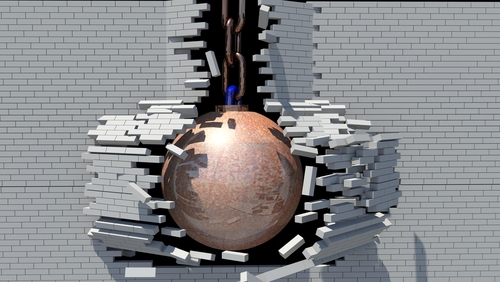A fragile economy is when insurance is most needed
Following is an article that is relevant to many businesses. It comes as no surprise that when times are tough insolvencies increase, and we are faced with that economic climate right now. Our team are capable of sourcing the right Credit Insurance to provide you with protection, so please contact us and let us help you.
Insolvency rates within the Australian construction industry have reached alarming heights, with a staggering 22% of total bankruptcies appearing within the building sector last year.
ASIC recorded more than 1800 insolvencies within the Australian construction industry in 2014, compared with 472 collapses reported in manufacturing and 218 in agriculture.
Atradius Managing Director Mark Hoppe says the figures highlight an urgent need for credit insurance among businesses within this high-risk sector.
“In these hard times, Australia’s construction companies should think about adopting credit insurance to avoid the risk of losing their business,” Hoppe says.
“By taking out credit insurance, construction businesses can reduce their business exposure to unnecessary trading risks and cover losses from non-paying customers, whether it is the customers’ fault or not.
“Transferring credit risks can provide businesses with the confidence to continue to trade in industries which remain challenging. It can also assist with funding operations and managing cash flow, which is essential.”
For subcontractors trading in credit, a failure to cover receivables leaves a significant percentage of business ledger uncovered.
Atradius New Zealand Country Manager Martin Jones says that subcontractors are at risk of other company’s financial issues when without credit insurance.
“Subcontractor businesses often mistakenly link well-known contractor brands with a perceived assurance against bad debt,” Jones says.
“However, it is risky to make commercial assumptions and gamble on them when trading on credit terms.”
One instance of insolvency has the potential to create huge flow on effect, particularly if it is a main contractor defaulting on payments.
QBE Credit & Surety Group General Manager Richard Wulff says that the way the industry is structured adds extra pressure to smaller players.
“Subcontract layers within the industry and the cash flow through these layers compounds insolvency risk,” Wulff says.
“The lifeblood of a small business is cash flow so any issues with, or a failure to receive, payment can have significant consequences that insurance can help minimise.”
“The construction industry is notorious for stretching terms of payment, which puts pressure on the smaller players and ultimately leads to a high rate of failure,” he adds.
Insolvency within construction is on the rise worldwide, with the building sector performing badly in Belgium, UK, Ireland, China, New Zealand and Spain.











